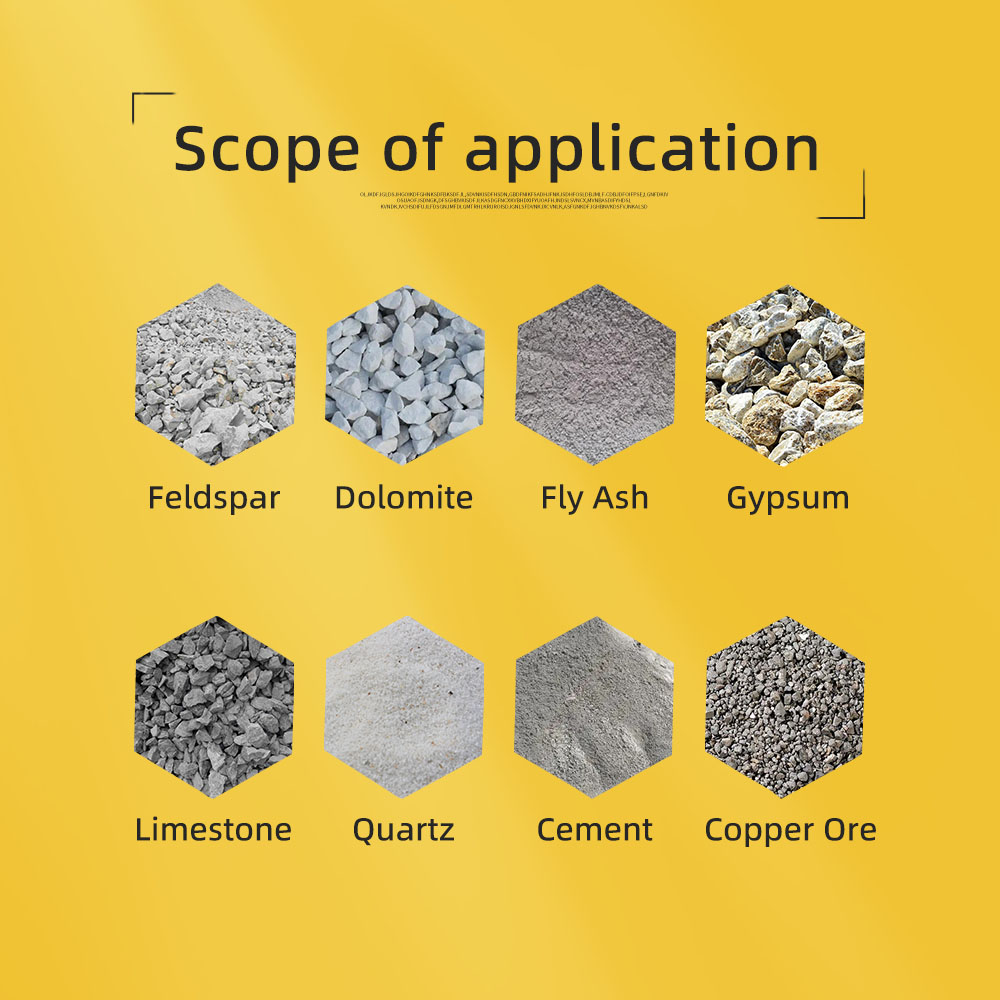In the raw material processing links of many industrial fields, ball mills have always occupied the position of core equipment with their efficient and reliable crushing and mixing capabilities. Its core function is to finely crush blocky or granular solid raw materials to the required particle size through physical mechanical force, and to achieve full mixing and homogenization of materials in the process.
Core working principle:
The main body of the ball mill is a rotating cylinder placed horizontally or slightly tilted. A certain proportion of the material to be ground and the grinding medium (usually steel balls, porcelain balls or pebbles) are loaded in the cylinder. When the cylinder rotates driven by the motor, the grinding medium is lifted to a certain height under the action of centrifugal force and friction, and then thrown or poured down. In this process, the material is strongly impacted, ground and rolled by the grinding medium, and the particle size is continuously reduced, and finally reaches the required fineness. By accurately controlling the parameters such as the cylinder speed, the size, shape, ratio, filling rate and grinding time of the grinding medium, the particle size distribution and characteristics of the final product can be flexibly controlled.
Wide and critical application scenarios:
Mining beneficiation (cornerstone application): This is the most traditional and important application field of ball mills. It crushes and grinds the coarse-grained ore mined to a suitable particle size (usually several microns to hundreds of microns), creating necessary conditions for subsequent physical beneficiation (such as flotation, magnetic separation, gravity separation) or chemical beneficiation (such as leaching) processes. It is an indispensable core equipment for extracting metals (such as copper, gold, iron) and non-metallic minerals (such as phosphorus and potassium).
Building materials industry (huge scale):
Cement manufacturing: Grinding cement raw materials (limestone, clay, iron powder, etc.), cement clinker and mixed materials (such as slag, fly ash). Raw material mills and cement mills are key host equipment for cement production lines, and their grinding efficiency directly affects cement quality and energy consumption.
Ceramics and refractory materials: Used to grind raw materials such as quartz, feldspar, clay, alumina, etc. into extremely fine slurry or powder to ensure uniform composition of green bodies and glazes and excellent sintering performance.
Chemical industry and powder metallurgy (fine requirements):
Chemical raw materials: Grinding pigments, dyes, coatings, pesticides, fertilizers, fillers, etc. to ensure that the product color, hiding power, reactivity or physical properties meet the requirements.
Powder metallurgy: Producing metal powders (such as iron powder, copper powder, tungsten powder) and alloy powders for manufacturing precision parts. Ball milling can also achieve mechanical alloying to prepare alloy materials with special properties.
New materials: In high-tech fields such as lithium-ion battery materials (such as positive and negative electrode materials), catalysts, and electronic ceramic powders, high-energy ball mills are used to prepare ultrafine powders or nano-composite materials.
Electricity and environmental protection (emerging growth point):
Thermal power generation: Preparation of limestone powder slurry with qualified fineness required for flue gas desulfurization (FGD).
Solid waste treatment: In the resource utilization of solid waste, ball mills are used to crush and grind waste electronic appliances (such as circuit boards), waste batteries (pre-treatment of valuable metals), tailings, construction waste, etc., for subsequent sorting or chemical treatment.
Food and medicine (special applications): Used to grind cocoa, spices, medicinal materials, etc. under conditions that meet hygiene standards.
